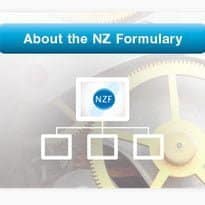New Zealand has launched an entirely digital national formulary based on the British National Formulary, in the first partnership of its kind for the BNF.
Murray Tilyard, professor of general practice at Otago University and chief executive of the New Zealand Formulary, told eHealth Insider that when New Zealand decided to introduce a formulary it did not want to “start from scratch.”
The NZF is licensed to use all BNF content that has been checked and customised for the country, and includes monthly updates of information such as drug alerts from New Zealand organisation Medsafe.
It links to drug-buying agency Pharmac, to show whether drugs are fully funded, and to Stockley’s Interaction Alerts from the Royal Pharmaceutical Society to show drug interactions.
The society owns 50% of the limited partnership, which signed a contract with the New Zealand government last October to provide the formulary in web version, as an e-book and as an integratable web service.
The fully digital NZF went live in in July and by September, the website had received 60,000 visitors and 750,000 page views.
App developers can get a free license for the content and a smartphone application is expected to be released by early next year.
The NICE BNF app has been hugely successful with tens of thousands of downloads so far.
The NZ team are also in talks with all the major GP systems vendors about integrating the formulary into their clinical systems.
The ultimate aim is for the NZF to fully integrate with a patient’s record, pulling out current drug information to provide decision support.
This might include alerting the clinician as to possible interactions, advising on alternative drugs, and highlighting when a medications review is necessary.
The NZF already links with a Best Practice decision support tool on 95% of New Zealand GPs’ desktops.
BNF publishing director Duncan Enright said the key difference with the NZF is that it was “born digital.”
The BNF introduced a digital version 20 years ago, but because this was always based on a physical book, the NZ team have been able to make some different decisions and try different approaches, he said.
The two organisations have a commercial relationship, but more importantly are hoping to learn from each others’ experience.
“It’s really useful to have a perspective from a fresh team who can start from a different place. That will enrich the BNF,” Enright said.
This is the first formal partnership the BNF has entered into, but its content has been licensed for translation into several languages.
Enright said the BNF is also aiming for full integration with all UK primary care systems.
A key benefit of the formulary is to reduce adverse drug events and unnecessary hospital admissions.
Research done on the impact in New Zealand estimated savings of (NZ) $7m – $9m a year. The cost of introducing the NZF was $1.5m.

